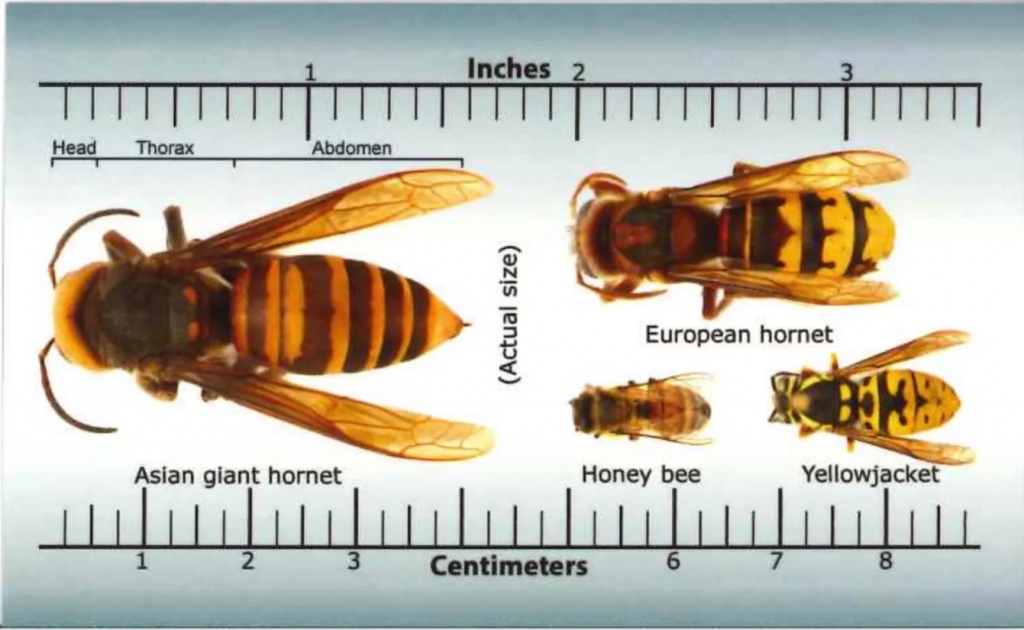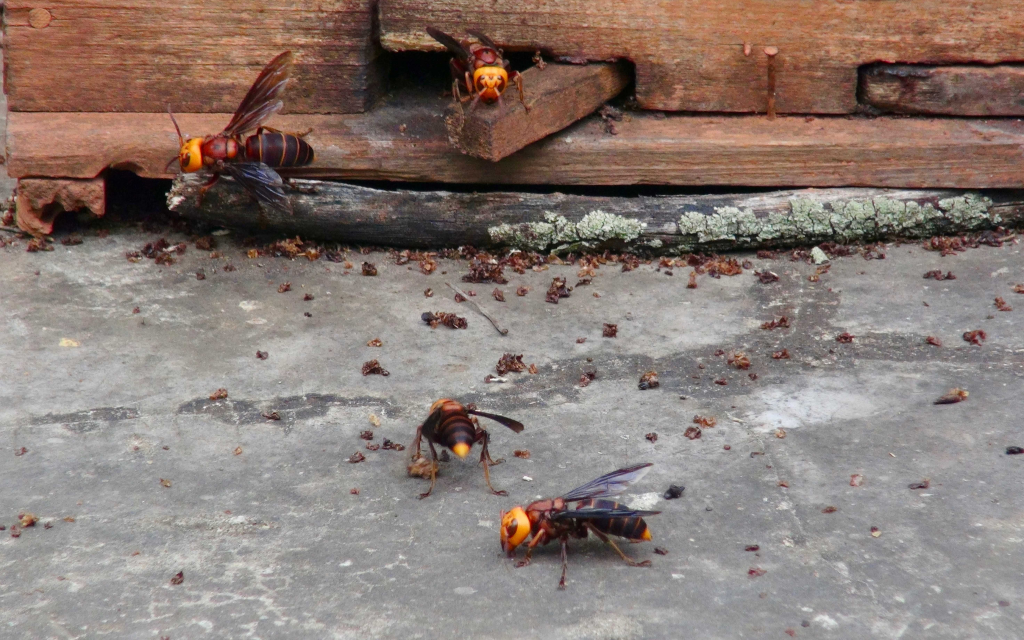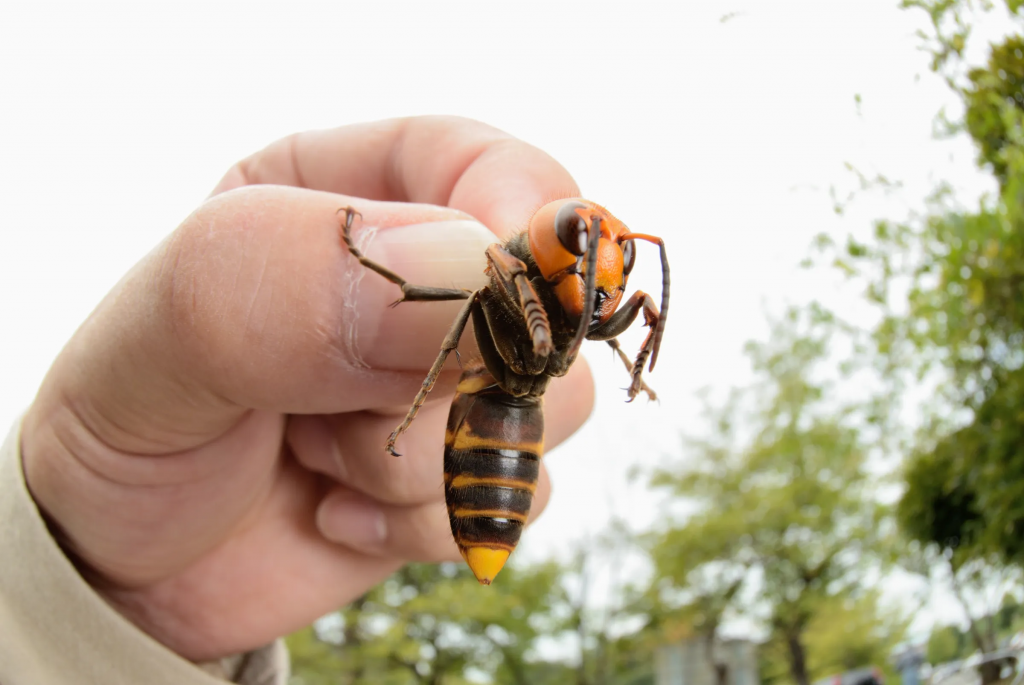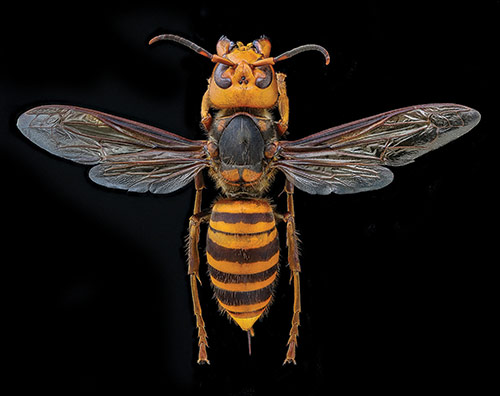Picture this: a peaceful world where bees, wasps, and hornets live their lives, pollinating plants and maintaining ecosystems, like characters in a well-balanced movie. But suddenly, out of the shadows, comes a merciless assassin, tearing through the tranquility like a scene straight out of John Wick. Enter the Asian Giant Hornet, or as I like to call it, the John Wick of hornets—a relentless predator on a mission to wreak havoc on our beloved honeybees.
Now, I know what you’re thinking: “Bees? Really?” But yes, bees are my favorite insect. They’re not just magical; they’re absolutely vital to our survival. Without them, life as we know it would collapse faster than a bad action movie sequel. They pollinate 75% of all the flowers and plants we rely on—everything from apples and avocados to coffee and, yes, even almonds (because who doesn’t love almond milk?). And let’s not forget the honey—that golden nectar that sweetens our tea, drizzles over pancakes, and even heals our wounds. Bees do it all, and they do it peacefully. That is, until the John Wick of hornets shows up.
A Peaceful World of Bees… Until
In the vast world of bees, everything is pretty idyllic. You’ve got over 20,000 species of bees buzzing about, each doing its part to keep nature in balance. There are the honeybees, the hard-working vegetarians of the insect world, peacefully collecting pollen and making honey. Think of them as the farmers and artisans in this world.
Then, there’s the wasps, the hairless, bug-eating army. While they aren’t as soft and cuddly as the honeybees, they still play their part, keeping pest populations down like the dutiful soldiers they are.

And then… there’s the hornets. They’re like the special forces—bigger, meaner, and definitely more aggressive. But even they pale in comparison to the Asian Giant Hornet—the true mercenaries of this world. If the honeybee is the peaceful farmer, then the Asian Giant Hornet is the assassin who crashes the party, takes no prisoners, and leaves devastation in its wake.
Meet the John Wick of Hornets
The Asian Giant Hornet (Vespa mandarinia), often mistakenly referred to as the “Murder Hornet,” is not your run-of-the-mill insect. This beast of a bug grows up to 2 inches long (imagine a flying creature as big as your thumb), and its wingspan can be up to 3 inches. That’s right—this thing could probably take up your entire palm. Compared to the modest honeybee, which is about the size of a pencil eraser, these hornets are towering giants.

Much like Keanu Reeves’ character in John Wick, these hornets are not here to play games. They are armed to the teeth—or, more accurately, armed with terrifying stingers and jaws. Their stinger, as long as a toothpick, injects a potent venom that can literally dissolve tissue. But wait—there’s more. Their mandibles—those scissor-like jaws—can decapitate a honeybee in one swift bite. And they do this with chilling precision, much like John Wick going through a room full of henchmen.
A Lethal Hunter
If you’re still wondering why I’m comparing these hornets to a cinematic assassin, consider this: The Asian Giant Hornet doesn’t just kill bees; it hunts them with the kind of ruthless efficiency you’d expect from a hitman. These hornets send out scouts to locate honeybee hives. Once a hive is found, the scout leaves a pheromone marker—a kind of insect GPS—so the rest of the hornet gang can home in on the target.
Then, the real massacre begins. A swarm of about 20 hornets can completely decimate a colony of 30,000 honeybees in a matter of hours. They’ll kill every adult bee in sight—up to 40 bees per minute—before feasting on the larvae. They don’t just eat the honeybees, though. No, these hornets are more sophisticated than that. They take the bee larvae back to their own nest to feed their young, ensuring that the cycle of terror continues.
It’s like watching John Wick methodically take down his enemies, only instead of mobsters, it’s honeybees.
Can the Bees Fight Back?
Now, you might be thinking, “Is there any hope for the bees?” Surprisingly, yes—at least for the Japanese honeybees. Unlike their Western cousins, Japanese honeybees have developed a defense strategy against these hornet assassins. When a hornet scout enters their hive, the honeybees let it in. Then, they swarm the hornet in a ball of bees, vibrating their wings furiously. This generates heat—up to 117°F—and essentially roasts the hornet alive. It’s like a slow-cooker death, one that leaves the honeybees unharmed, as they can tolerate higher temperatures than the hornet. Take that, John Wick!
Are They a Threat to Humans?
Thankfully, the John Wick of hornets doesn’t have a personal vendetta against humans. Unless you’re foolish enough to mess with their nest, they’re not going to chase you down like in an action thriller. But if you do provoke them, they will defend themselves, and their stings are no joke. While a single sting is painful but not life-threatening for most, their venom contains mandaratoxin, which can destroy red blood cells and cause serious tissue damage. In rare cases, stings can lead to anaphylactic shock or kidney issues, particularly if you’re allergic. So, yes—don’t poke the nest!

How to Help the Bees Fight Back
We might not be able to suit up like John Wick and take on these hornets, but we can help the bees by creating environments where they can thrive. Here’s how:
- Plant bee-friendly flowers: Fill your garden with plants that attract bees, giving them plenty of nectar to collect.
- Provide shelter: Buy or build bee houses where solitary bees can nest safely.
- Avoid harmful pesticides: Use organic, bee-safe products in your garden.
Hornets as a Delicacy… Wait, What?
Before I wrap this up, let’s take a brief detour into the bizarre: In Japan’s Chubu region, these hornets aren’t just feared—they’re eaten. That’s right. Locals boil, fry, and even steam them with rice. If that wasn’t wild enough, there’s also a guy who makes hornet vodka by drowning the hornets in alcohol and fermenting them for three years. Allegedly, drinking this concoction gives you beautiful skin and cures depression. (I’ll let you decide whether you want to give it a try.)
The Asian Giant Hornet, aka the John Wick of the insect world, is a force to be reckoned with. While their presence is terrifying, we can still protect our beloved honeybees and ecosystems with a little awareness and effort. And remember, unless you want to end up in a real-life action scene, stay far, far away from their nests.
As for me, I’ll stick to loving bees from a distance—and maybe skipping that hornet vodka.

